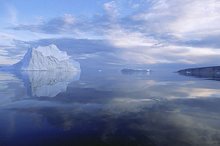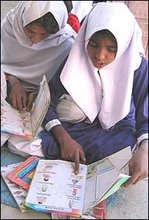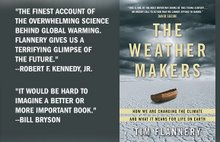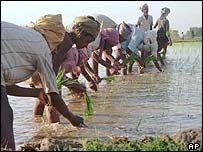PREAMBLE: For each issue of this blog, we search for topics which deserve wider dissemination and action. In this issue we feature the commentary of Max Ajl in Daily Climate News and Analysis. October 20, 2009 (reference below). The topic is critical to survival of our planet as we know it, and Ajl’s grasp of the issues is transparent. He cites conclusions from an October 2009 UN conference on desertification, which offers both warnings and potential solutions. For example, dryland populations are already some of the planet’s most vulnerable: about 90% of such populations are in developing countries, and infant mortality rates in dryland areas are among the highest. However, he appears optimistic that the process of desertification may be fixable: for example, in a northern province of Argentina, a team of soil experts worked with native plant species to restore the micro-region’s bio-diversity and soil quality through a slow, deliberate process of re-vegetation. The plants are still growing and the project is still on-going, and it appears that the process of degradation has been stopped, at least for the time being. Relevant to the global search for carbon capture methods, he notes that dry land soils are nowhere close to carbon saturated and may have enormous potential for carbon sequestration. He concludes by emphasizing the primary need to ensure that cultivation techniques are ecologically appropriate: to prevent desertification it before it starts.
Read on for more detail on these timely and constructive observations, which we have taken liberty to select and paraphrase, for further dissemination in the public interest:
Desertification Threatens Food Security and ClimateAccording to Max Ajl, one must keep in the mind the distinction between deserts as a specific ecosystem and desertification as a specific process: “deserts are beguiling and wondrous…; (but) desertification is the rapid, human-induced creation of deserts — the sudden, accelerated conversion of arid or semi-arid land, usually by over-grazing, deforestation, over-extraction of groundwater, drought, over-planting, or some nasty combination of the five. Desertification, we can hopefully stop and, if we catch it early, reverse at a reasonable cost — and in the process, do a good bit to stop climate change and global warming.” That, he notes, is the idea behind a recent congress on the United Nations Convention on Desertification, which wrapped up this month (October 2009) in Argentina. The Convention is an off-spring of the 1992 United Nations Conference on Environment and Development (UNCED), better known as the Rio Conference. Its executive secretary, Luc Gnacadja, warned that action is urgent: ‘If we cannot find a solution to this problem ... in 2025, close to 70 percent [of the planet’s soil] could be affected," Gnacadja said. "There will not be global security without food security.’ ”
Ajl summarizes the process of desertification: “When land covered with vegetation loses its vegetation, it heats up more rapidly, worsening climate change. Hotter soil leaks carbon into the atmosphere faster than non-overheated soil, thereby contributing to the world’s CO2 count. Furthermore, as vegetation is eaten up during over-grazing or destroyed, its root structure disappears. Massive amounts of plant-based carbon go directly into the atmosphere from the land, where it had formerly been securely stashed away. Furthermore, the humus that had been stored in the soil also migrates into the atmosphere, contributing to the overload of CO2 already there.” He continues: “Processes of desertification are world-wide and worsening. Even in 2000, nearly 40 percent of the world’s agricultural land was… seriously degraded, according to the World Resources Institute. In Central America, the figure was 70%; in Africa, 20%.... UN officials claim… that if current trends continue, 75% of the continent’s people will rely on some kind of food aid by 2025.”
“Dry-land — which can include forests but primarily means grasslands — is particularly susceptible to desertification. Dry-lands are 40 percent of the earth’s surface and technically refer to lands where the prevailing climate is classified as dry sub-humid, semi-arid, arid or hyper-arid. Although they have a lower per-meter amount of plant biomass, roughly 6 kg/m2, compared to other vegetation-covered ecosystems, which have between 10 and 18 kg/m2 of biomass, they are estimated to contain 27 percent of total global soil carbon. Many of these regions are also degraded, due to rampant over-grazing compounded by drought. As the United Nations Environment Program point out, such soils are not remotely close to being saturated with carbon and may have enormous potential for carbon sequestration. According to the Millennium Ecosystem Assessment (MEA), World Resources Institute, 10 to 20% of drylands are already degraded. Between 1 and 6% of the people living in drylands live in totally desertified areas."
He notes, “dryland populations are already some of the planet’s most vulnerable. About 90% of dryland populations are in developing countries, and infant mortality rates for countries dominated by drylands tower over the others. Likewise, gross national product is far lower for dryland-countries than for those countries with more diverse and moist bio-regions. Another issue is the over-use of intensive agriculture in places ecologically unsuited for it. As the MEA researchers note, ‘Transformation of rangelands and sylvo-pastoral dryland systems to croplands increases the risk of desertification.’ Such risks are worsened by the use of input-intensive and heavily mechanized cultivation practices, especially in lands that are utterly unsuited for such intensive agriculture.”
He continues: “A different source of degradation is the forced shift from grassland to shrub-land, as large-scale unsustainable ranching or pasturing practices increasingly prevail throughout the world (although properly-practiced ranching can increase the amount of carbon stores in soil). As grass-land transitions to shrub-land leads to more naked and exposed soil, accelerating run-off and heightening erosion. In savannas, the carbon flux into the atmosphere may be at least as large as that from deforestation.”
However, he appears optimistic that the process of desertification may be fixable, citing an Argentine example: in a northern province, Santiago del Estero, a team led by Italian soil expert Massimo Candelori reversed desertification in Colonia El Simbolar… the team worked with native plant species to restore the micro-region’s bio-diversity and soil quality through a slow, deliberate process of revegetation. The plants are still growing and the project on-going; it appears that the process of degradation has been stopped, at least for the time being.
More broadly, he states, “making sure cultivation techniques are ecologically appropriate, is the best weapon against desertification: preventing it before it starts…. Practices that contribute to soil degrading include removing crop residue for cheap fodder, fuel and fencing; removing top soil for making bricks; and using animal waste for household cooking rather than working it into the soil as natural fertilizer. These long-held practices can be changed through education.” He cites Rattan Lal, the world’s leading soil authority: "long-term sustainable management of soil must be given priority over the short-term gains." Ajl concludes: “Desertification is stoppable, if action begins now.”
Source: Max Ajl. Solve Climate. Daily Climate News and Analysis. October 20, 2009. http://solveclimate.com:80/blog/20091020/desertification-threatens-food-security-and-climate
FROM a Great Canadian and World Statesman
"A great gulf... has... opened between man's material advance and his social and moral progress, a gulf in which he may one day be lost if it is not closed or narrowed..."
Lester B Pearson
http://nobelprize.org/nobel_prizes/peace/laureates/1957/pearson-lecture.html
Sunday 15 November 2009
Subscribe to:
Posts (Atom)
INSPIRATIONAL WELCOME ............................... from T.S.Eliot's "Little Gidding"
If you came this way From the place you would come from... It would be the same at the end of the journey...
If you came, not knowing what you came for, It would be the same... And what you thought you came for Is only a shell, a husk of meaning... From which the purpose breaks only when it is fulfilled If at all.




















